In 1862 during the midst of a bloody Civil War that pitted North against South, Congress passed the Pacific Railroad Act which tasked the Central Pacific and Union Pacific Railroad companies with linking the country from East to West. That incredible task which transformed the nation, celebrated its final and momentous conclusion at Promontory Point, Utah on May 10, 1869 with the driving of a 17 kt gold spike. One hundred years later, a Cold War existed which competed East against West in a race to space and the moon. On July 20, 1969, the race met its conclusion as Apollo 11 landed on the moon powered by rocket technology developed in part at Promontory Point Utah at the ATK rocket test facility. The legacy of both these great races are literally just hundreds of feet apart at Promontory Point at the Golden Spike National Historical Park and the ATK Rocket Garden!
Golden Spike National Historical Park
The Golden Spike National Historical Park is a fascinating place to visit to understand the joining of our nation. Visitors to the park get to view replica engines of the Central Pacific Jupiter and the Union Pacific No. 119 as they meet at the exact location where the Golden Spike was driven back in 1869. It is interesting to look at the railroad ties as the ties of the Union Pacific and the Central Pacific were made of different types of timber and were of varying size and shape so it is very easy to see where each railroad completed and each lead to the final tie where the Golden Spike was driven.



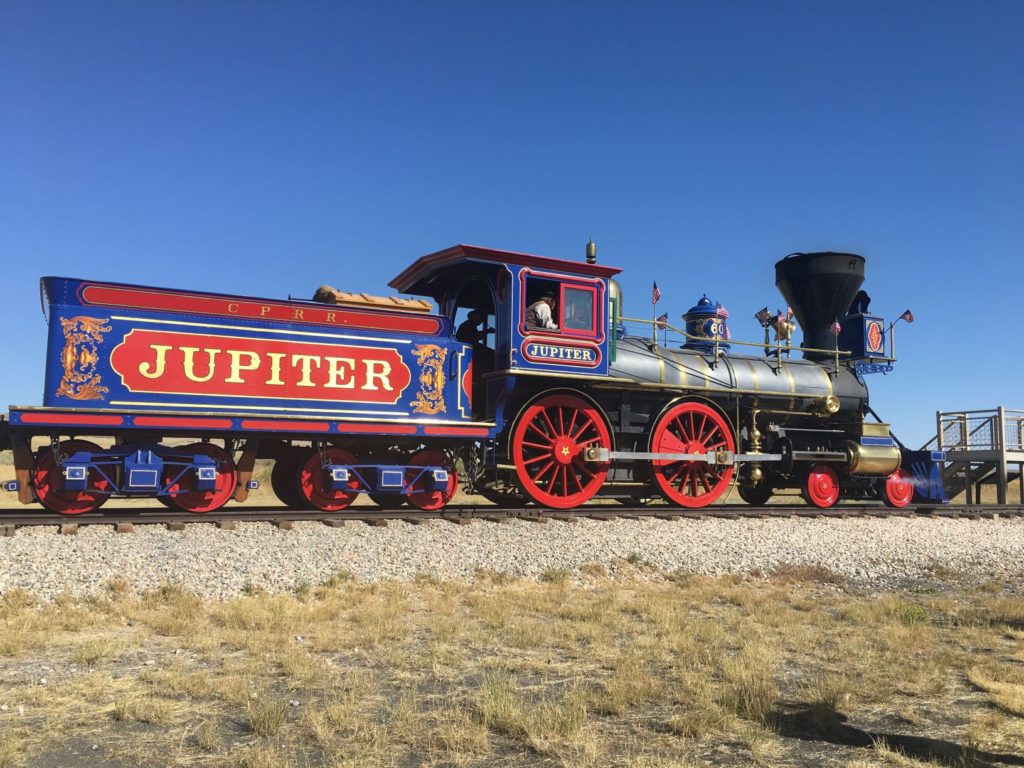
In addition to the trains, the park includes a museum and films that tell the story of the building of the railroad and the people who performed this great engineering feat. But if you really want to get a feel for this historical location you need to explore the auto routes and drive the original railbeds which are still in place and the terrain looks almost identical to how it would have looked in 1869.

Transcontinental Railroad National Back Country Byway
The Golden Spike National Historical Park is a fascinating place to visit to understand the joining of our nation, but Promontory Point is not where you go to learn about the past but rather where you go to experience it. The Transcontinental Railroad National Back Country Byway is a 90-mile dirt byway which follow the old railroad grade from just outside the National Monument to the Nevada border which passes through the remnants of old railroad sidings, towns and trestles. It does require a high clearance vehicle but is easily passable in dry weather.




As you drive the old railroad grade you will pass through the original cuts through the surrounding mountains and across the fills that leveled the desert valleys. You will pass old discarded rail ties on the side of the grade as well as tools, glass bottles and old boiler bricks that have been discarded from the old steam engines. Perhaps nothing is more exciting than climbing on the original trestles that bridged the nation 150 years ago.


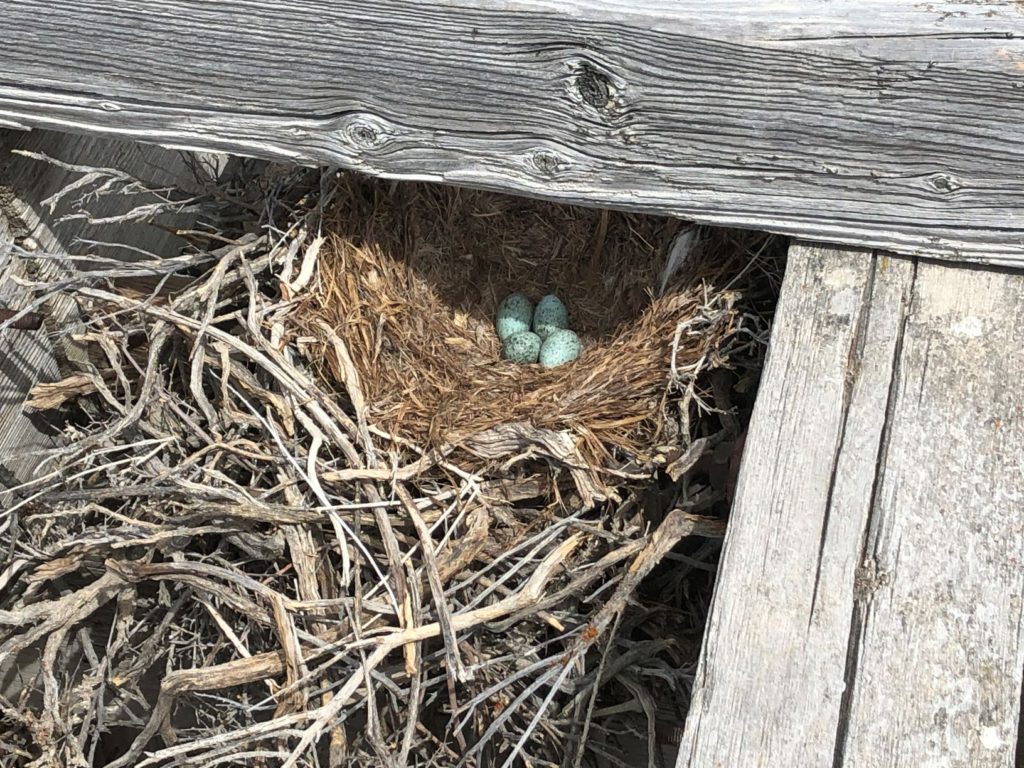



But the trains are only half the story. Old cemeteries are all that remain of most of the old rail towns, but they stand as memorials to those tough people who built this nation whose remains, they still hold. These cemeteries are as dilapidated and abandoned as the railroad itself but the railbed and the cemeteries together tell the story of the people and the terrain they conquered. The terrain surrounding the railway is even more desolate than it was in 1869 as the towns that lined the railroad have disappeared. However, few places in America can you experience the same views and terrain that the first train passengers would have experienced on their trip across this great country. This is a trip that both adults and children will enjoy as they relive history.
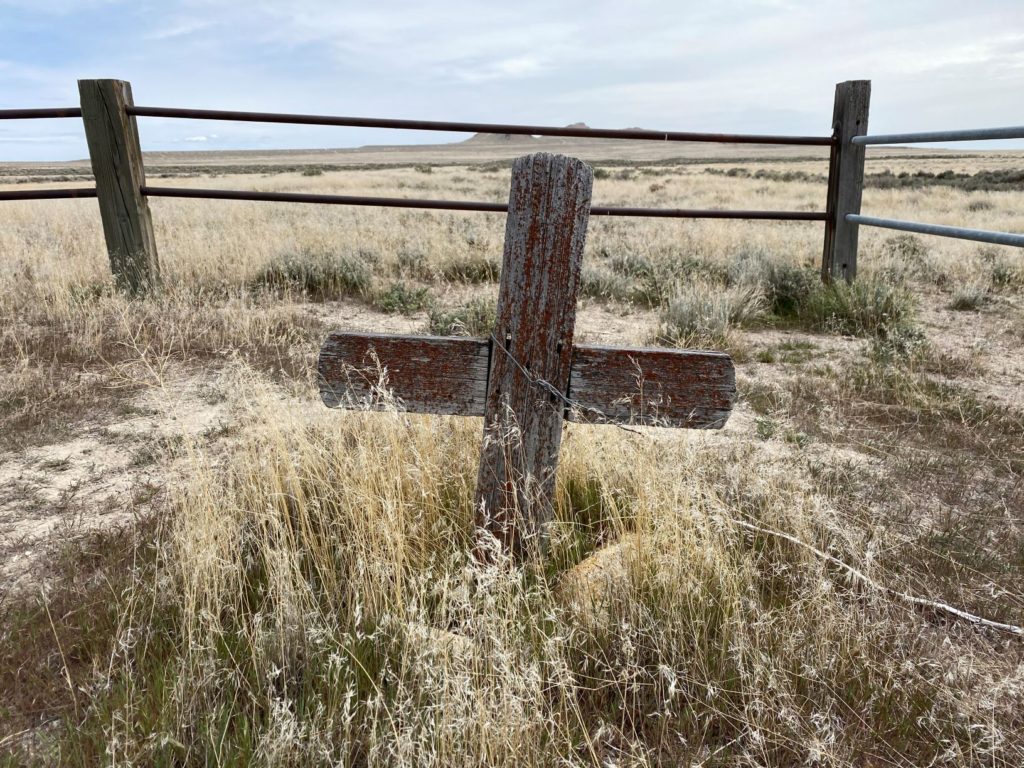






Locomotive Springs
In the desolate desert and salt flats that make up the Transcontinental Railroad National Back Country Byway water was one of the rarest of commodities in this harsh environment so the last thing one expects to find is fresh water lakes springing from the desert floor, but that is exactly what you will find at Locomotive Springs. Just 2 miles off the byway is the freshwater waterfowl management area which is made up of multiple natural springs flowing from the desert creating a beautiful contrast as the water provides life to multiple species of birds and fish in one of the harshest environments imaginable. This peaceful setting in the midst of the harsh desert is a welcome stop along the byway.



Spiral Jetty
Built in 1970 by sculptor Robert Smithson near Rozel Point on the northwestern shore of the Great Salt Lake out of mud, salt crystals and basalt rock, this man-made jetty attracts visitors from all over the world. There is a small parking lot (do not tow trailers as we learned) at the jetty where you can eat a picnic lunch and hike out onto the lake shore and explore the jetty. The Spiral Jetty is about 20 miles from the Golden Spike visitor center down a wash boarded dirt road but is perfectly accessible by car. This is just one more fun thing to view at Promontory Point.

ATK Rocket Garden
Just across the valley from “The Big Fill” at the Golden Spike National Historical Park one will notice the miles of cleared land on the mountain to the East which is the ATK rocket test facility where the solid fuel boosters for the space shuttle were manufactured and tested. As one approaches the facility they will notice the windowless buildings with emergency escape slides providing a quick escape route for these facilities that deal with these highly dangerous rocket fuels. Just down Hwy 83 from the turn off to the Golden Spike site is the main ATK facility parking lot and out front right along the highway is a rocket display that outlines the history of ATK’s development of rockets and missiles. This is a small display and only takes 10-15 minutes to explore but we really enjoyed standing under a space shuttle booster and seeing the massive size of these rockets. The Rocket Garden is open 24 hours a day and is free so make this your last stop of the day on your way out of the National Historical Park.

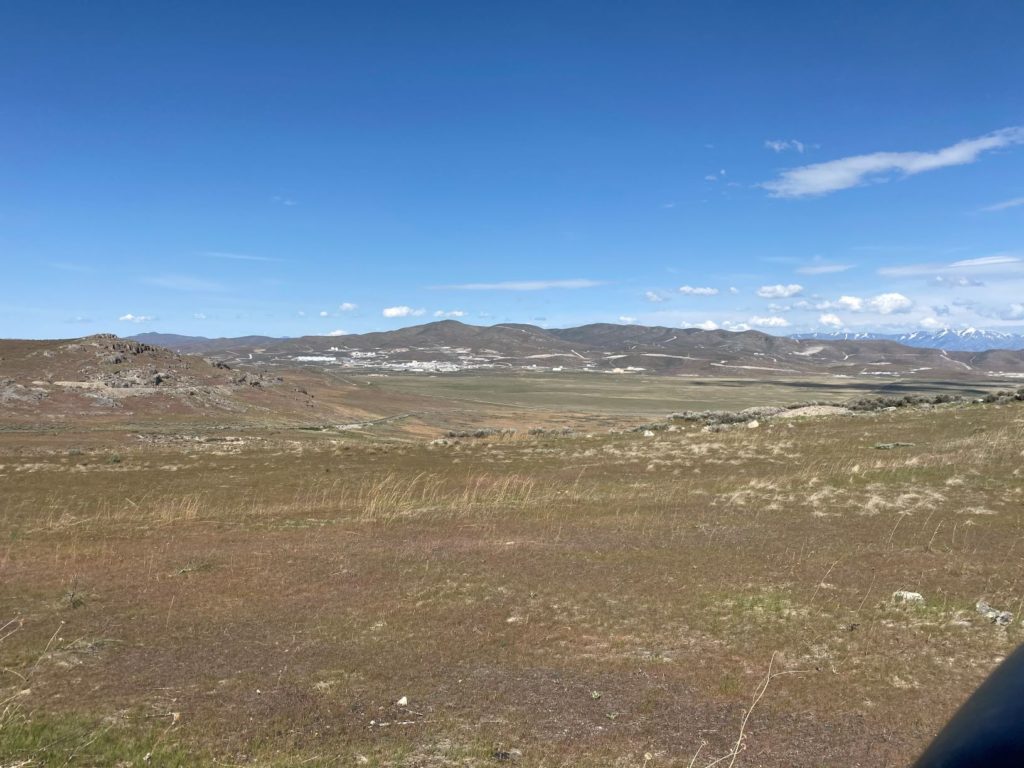


Where to Eat
Dining options are non-existent at Promontory Point so bring a picnic lunch that can be eaten at the National Park Visitor’s Center or along the trail. However, whether it is on your way in for breakfast or on your way out for lunch make sure you stop in Corrine, Utah at the Golden Spike! They have terrific food that is a great way to start or end your adventure to Promontory Point.



Where to Stay
Dry camping is available along the route and at Kelton but the roads are dirt roads so be prepared if bringing a trailer. Camping is also allowed at Locomotive Springs. If you need a hotel Brigham City is the closest lodging.
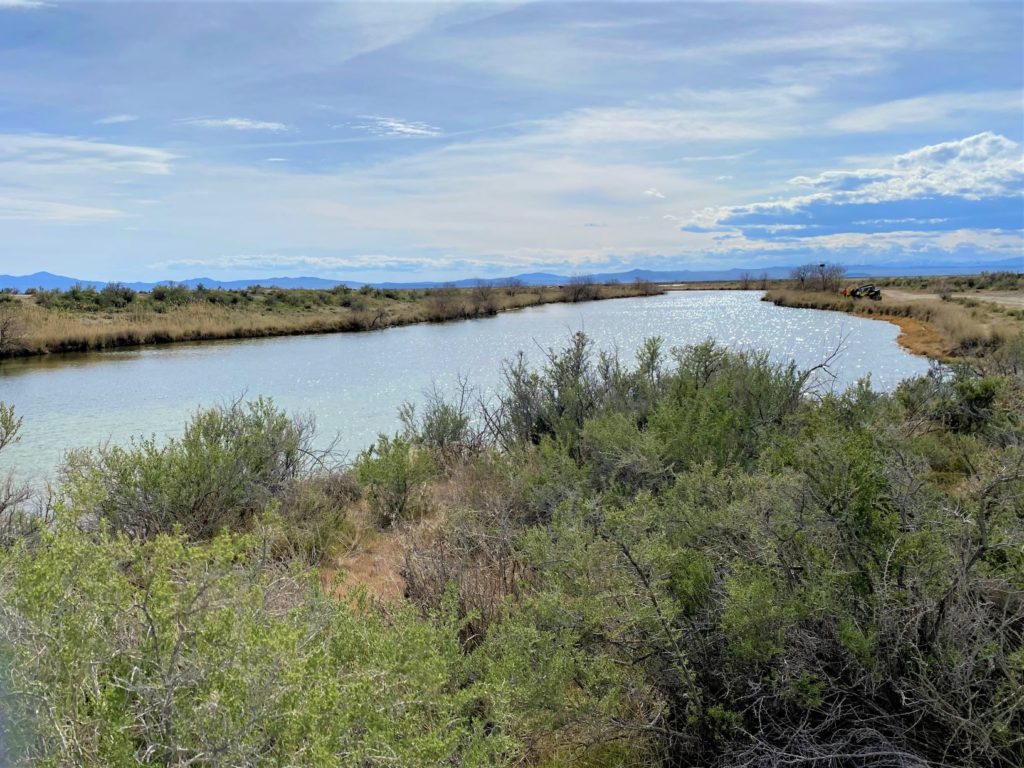
Getting There
Promontory Point is accessible from multiple exits off I-15 so look for the signs for the Golden Spike National Historic Park on the freeway and follow them to the site.
Conclusion
Promontory Point is a fascinating trip back in history and is perhaps the largest historical transportation museum in the world demonstrating America’s unique transportation history from the race of two railroads to join a divided nation to the race of two nations to reach the moon, it can all be experienced here in this remote area of our great state!

